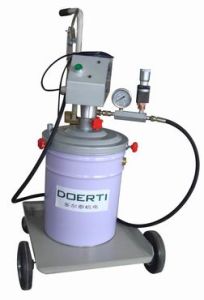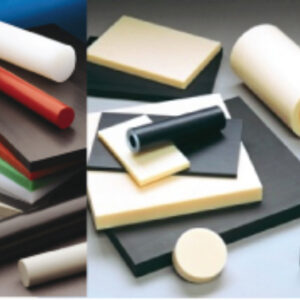When it comes to flooring, bathrooms often present a unique challenge. From standing water to humidity, there are a variety of factors that must be taken into consideration when choosing the right flooring for the bathroom. One popular option is peel and stick floor tiles, but can these tiles really handle the demands of a busy bathroom? In this article, we’ll discuss the benefits and drawbacks of using peel and stick floor tiles in the bathroom, as well as look at some alternatives.
Peel and stick floor tiles, also known as self-adhesive or vinyl tiles, have become increasingly popular due to their convenience and ease of installation. They are perfect for DIY projects, since they require no special tools or grouting and can be installed quickly. But when it comes to bathrooms, is peel and stick the right choice? In this article, we explore the benefits and drawbacks of using peel and stick floor tiles in a bathroom setting.
Can You Tile a Bathroom with Peel & Stick?

Peel and stick floor tiles are a popular choice for homeowners who want a quick and easy way to update their bathroom floors. While they can be used in bathrooms, it is important to choose the right type of peel and stick tile for the job. Look for tiles that are specifically designed for use in wet areas such as bathrooms, as these will be more durable and resistant to moisture.
It is also important to properly clean and prepare your bathroom floor before installing peel and stick tiles. Any dirt or debris on the surface can prevent the tiles from adhering properly, so make sure to thoroughly clean the area with soap and water before installation. Additionally, if your bathroom floor has any cracks or damage, it may not be suitable for peel and stick tiles.
Overall, while peel and stick floor tiles can be used in bathrooms, it is important to do your research and choose high-quality products that are specifically designed for wet areas. With proper preparation and installation, you can achieve a beautiful new look for your bathroom without breaking the bank or hiring a professional installer.
Advantages of Peel & Stick Tiles
Peel and stick tiles are a popular flooring option for those who want an easy, affordable, and low-maintenance solution to update their floors. One of the biggest advantages of peel and stick tiles is their ease of installation. Unlike traditional tile installations that require special tools and materials, peel and stick tiles can be installed without any special expertise or equipment. This makes them a great choice for DIYers looking to save time and money.
Another advantage of peel and stick tiles is their versatility. They come in a wide range of colors, patterns, and textures, making it easy to find a style that matches your decor. Plus, they can be used on various surfaces such as concrete, plywood or vinyl without the need for expensive underlayment or preparation work.
So can you use peel and stick floor tiles in a bathroom? Yes! Peel-and-stick tile is ideal for small spaces like bathrooms because it allows homeowners to give their space an updated look without breaking the bank. However, it’s important to choose high-quality adhesive-backed products that are specifically designed for damp areas like bathrooms as this will ensure longevity against moisture damage.
Disadvantages of Peel & Stick Tiles
Although peel and stick tiles are a convenient solution for homeowners who want to upgrade their floors quickly, they come with some drawbacks. The first disadvantage of peel and stick tiles is that they are not as durable as other types of flooring. The adhesive on the back of the tile may wear off over time, causing the tiles to come loose or even fall off completely.
Another disadvantage of peel-and-stick floor tiles is that they may not be suitable for all surfaces. For instance, if you want to install them in your bathroom or kitchen, you need to make sure that the surface is clean and dry before you start. If there is any moisture present on the floor, it can cause the adhesive to fail over time, leading to a costly repair job.
Finally, because peel-and-stick floor tiles are relatively easy to install, some homeowners might overlook hiring a professional installer altogether. However, without proper installation techniques and preparation work beforehand such as ensuring an even subfloor could lead to issues down the line such as unevenly laid out floors or de-bonding adhesives from poorly prepared subfloors.
Preparing for Installation
When preparing for the installation of peel and stick floor tiles in a bathroom, there are a few key steps to take. First, it is important to thoroughly clean the existing flooring to ensure that the tiles will adhere properly. This may involve removing any residue or debris from previous flooring materials, such as old adhesive or grout.
Next, you will want to measure your bathroom space carefully to determine how many tiles you need and how they should be arranged for optimal coverage. It is also important to consider any obstacles or fixtures in the room that may require special attention during installation.
Finally, it is recommended that you allow the tiles to acclimate to the temperature and humidity of your bathroom environment for at least 24 hours prior to installation. This can help prevent warping or buckling of the tiles over time. By taking these careful steps before installing peel and stick floor tiles in your bathroom, you can ensure a smooth and successful project with lasting results.
Installing Peel & Stick Tiles
Peel and stick tiles are a quick and easy solution for those who want to update the look of their floors without committing to a long and expensive renovation. However, when it comes to installing peel and stick tiles in a bathroom, there are some important considerations to keep in mind.
Firstly, it’s important to choose peel and stick tiles that are specifically designed for use in wet areas like bathrooms. These types of tiles typically have a waterproof layer that prevents moisture from seeping through the seams between the tiles.
Another important factor is proper surface preparation. The bathroom floor must be clean, dry, and free of any existing wax or debris before installation. Additionally, it’s recommended to use a primer or adhesive promoter on the surface prior to installing the tiles.
In summary, peel and stick tiles can be used in a bathroom as long as they are designed for wet areas, proper surface preparation is done beforehand, and an adhesive promoter is used if necessary. With these steps taken into consideration, homeowners can enjoy an affordable bathroom makeover with ease.
Sealing Peel & Stick Tiles
Peel and stick tiles have become a popular option for those who want to upgrade their floors without the hassle of conventional tile installation. These tiles are a great alternative for homeowners who want an affordable, easy-to-install, and durable floor covering. However, when it comes to installing peel and stick tiles in a bathroom or other high-moisture areas, it is important that they are sealed correctly to prevent water from seeping underneath.
Sealing peel and stick tiles is crucial to ensure its longevity. Most of these types of floorings come with adhesive backing that doesn’t require any grout or mortar. But even though adhesives are known for being waterproof, moisture can still seep through gaps between the planks or around the edges of the room. Sealing helps to prevent this by creating a barrier between your bathroom’s subflooring and the tiles.
To seal peel and stick tiles in your bathroom, you’ll need a clear silicone caulk. Run this along all edges where there may be gaps between the wall/flooring material and tile surface itself (around toilets, showers etc.). This will help protect against water infiltration which can damage your subfloor over time if left unchecked. Overall, sealing your peel-and-stick flooring is an essential step that should not be overlooked if you want it to last long-term in areas with higher humidity levels like bathrooms!
In conclusion, peel and stick floor tiles can definitely be used in a bathroom. However, it is important to choose the right type of tile for your specific needs. Look for tiles that are specifically labeled as waterproof or water-resistant to ensure they will hold up against the moisture levels typically found in a bathroom.
Another important factor to consider when using peel and stick tiles in a bathroom is proper installation. Make sure you thoroughly clean and dry the surface before applying the tiles, and use a primer if necessary. It’s also recommended to seal the edges of each tile with silicone caulk to prevent any water from seeping underneath.
Overall, with the right type of peel and stick tiles and proper installation techniques, using this convenient flooring option in your bathroom can be a great way to update your space without breaking the bank or undergoing major renovations.





